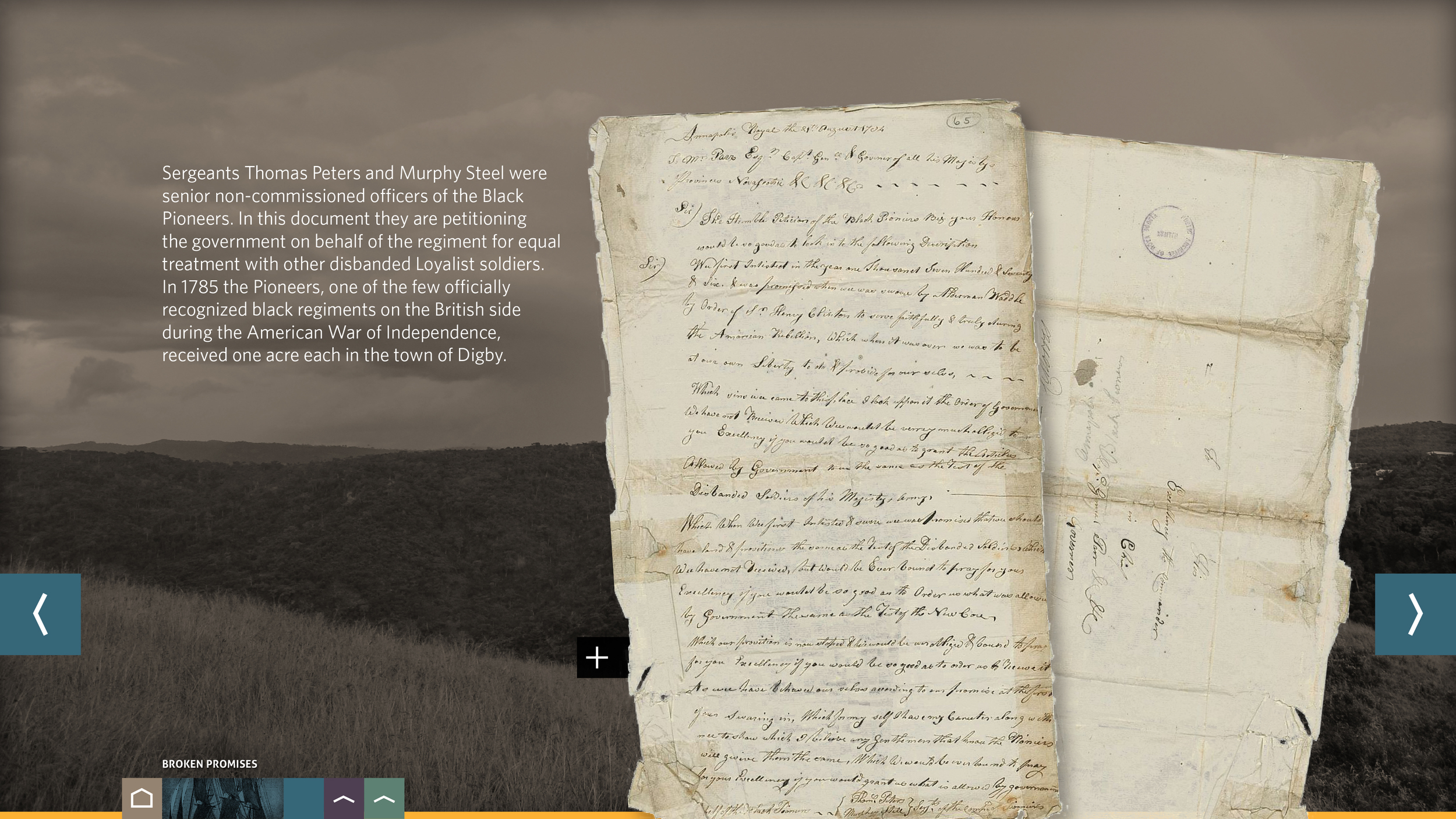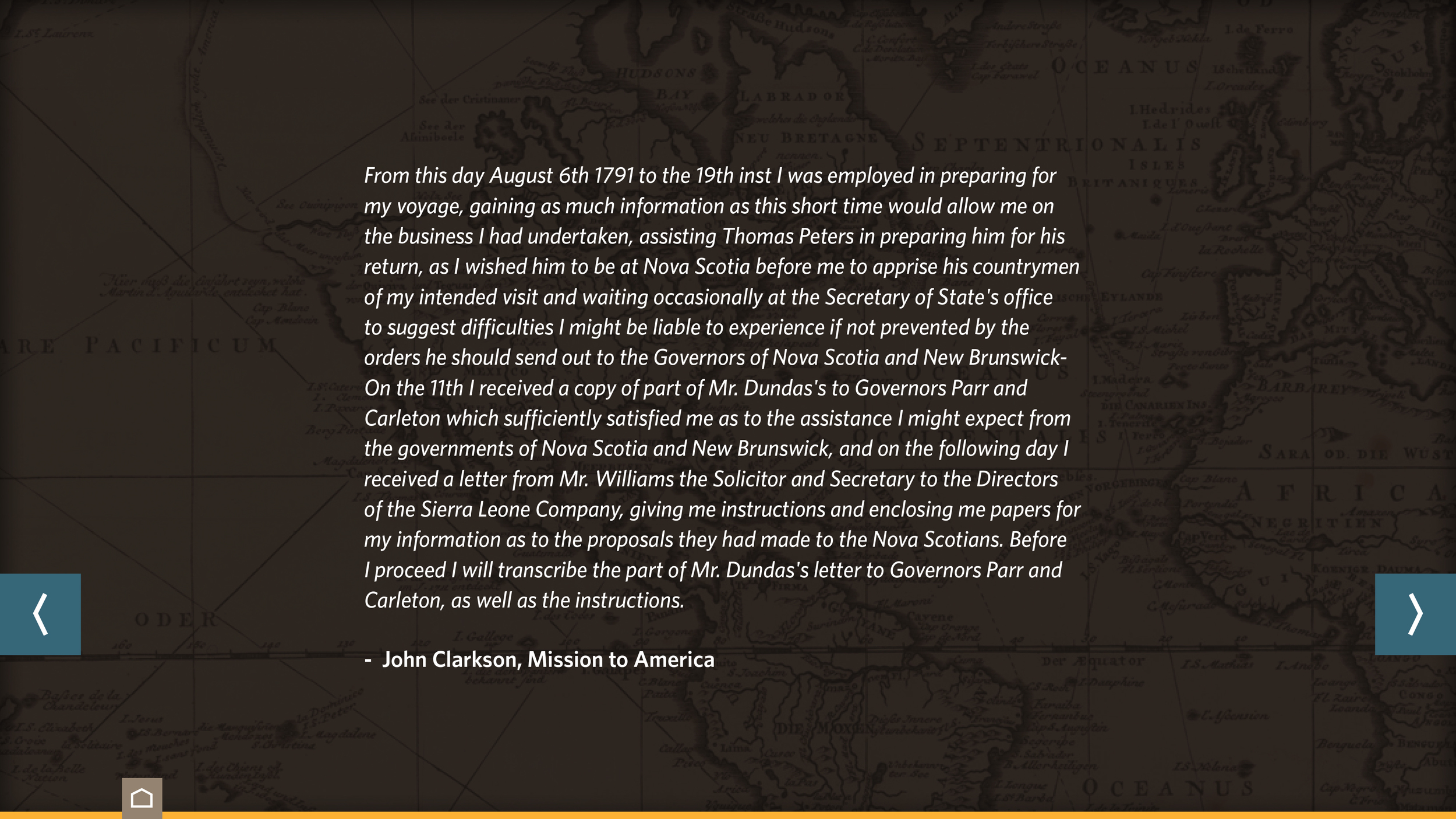Black Loyalist Heritage Centre
Black Loyalist Heritage Centre
Descendents standing proud
Nova Scotia’s Black Loyalists were at the heart of the greatest historical events of our continent. Theirs is a story of slavery, the American Revolution, and of the settlement of North America. Unlike the stories of the United Empire Loyalists and the American revolutionaries, this is a story that has rarely been told. Birchtown’s Black Loyalist Heritage Centre is a place to tell this story.
Fathom was chosen to develop a series of interactive touchscreens to allow visitors to learn about Black Loyalists, the story that is at the heart of the novel and television miniseries “The Book of Negroes.” Books have narration, and television productions have actors and sets, but bringing the story to life in a museum environment would be a challenge. The few records from that time are prosaic government documents: the historical “Book of Negroes” was a ledger, recording names and destinations, but little else. We looked to bring the story to life by using images that evoked a sense the settings of the story: Africa, New England, Europe, Nova Scotia. The result is an interactive experience that feels a part of the museum’s architecture, with atmospheric graphics filling the space.
CHALLENGE
How do you create a museum with almost no artifacts? Historical displacements, and a devastating modern-day fire left the Black Loyalists with a compelling story but few physical artifact to tell that story. Using a series of touchscreens allows story to be brought as close to the visitors as possible.
Status
2014–15 (strategy)
Our Role
strategy, branding, wayfinding, graphic design
Client
The Black Loyalist Heritage Society
Location
Birchtown, Nova Scotia
“People of African descent have been in what is now Canada since the opening years of the 17th century, but the first massive wave of Black immigration into Canada took place in 1783, when about 3,000 Black Loyalists fled New York City after aiding the British on the losing side of the American Revolutionary War and sailed to Nova Scotia. They settled in Annapolis Royal, Digby and Saint John (then Nova Scotia) among other communities, but the largest Black settlement became Birchtown, just outside the booming town of Shelburne. The story of the Black Loyalists—how they served the British in the war in exchange for the promise of freedom in peace time, and how they travelled to Nova Scotia only to endure hardships of slavery, indentured servitude, landlessness and hunger—is one of the great stories of Canadian history. Their perseverance, as well as the decision made by about 1,200 of them to leave Canada and to sail across the Atlantic Ocean to found the colony of Freetown in Sierra Leone in 1792—suggests the breadth and complexity of the world-wide migrations they had experienced as a result of the trans-Atlantic slave trade and its aftermath. Although many Nova Scotians joined the exodus to Sierra Leone in 1792, even more stayed behind to continue to build the province of Nova Scotia as we know it today. Their descendents stand proudly as members of the Black Loyalist Heritage Society and as creators of this Centre.”
IN THE WAKE OF OPPRESSION AND LOSS
In 2006, an arsonist set fire to the office of the Black Loyalist Heritage Society, destroying many of its valuable archives and historical papers. Instead of being defeated by the act of aggression, the staff, board members and volunteers of the Society pursued a dream they had already been nourishing to build an interpretive centre that would do justice to the complex story of its people.












